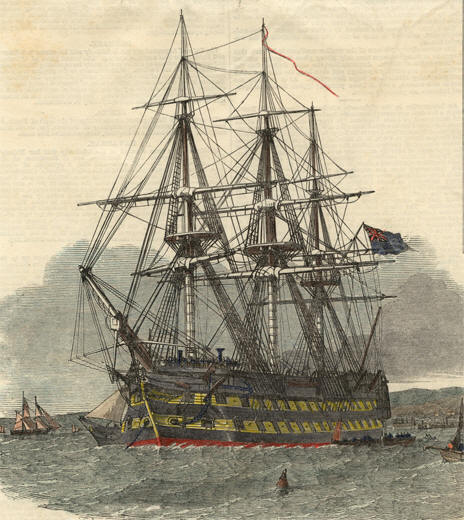| |
Date |
Event(s) |
| 1 | 1797 | - 16 Nov 1797—7 Jun 1840: Reign of Frederick William III
King of Prussia
|
| 2 | 1837 | - 4 Mar 1837—4 Mar 1841: Presidency of Martin Van Buren
8th President of the USA
- 20 Jun 1837—20 Jan 1901: Reign of Victoria
Queen of the United Kingdom of Great Britain and Ireland * Empress of India
|
| 3 | 1840 | - 7 Jun 1840—2 Jan 1861: Reign of Frederick William IV
King of Prussia
|
| 4 | 1841 | - 4 Mar 1841—4 Apr 1841: Presidency of William Henry Harrison
9th President of the USA
- 4 Apr 1841—4 Mar 1845: Presidency of John Tyler
10th President of the USA
|
| 5 | 1845 | - 1845—1852: Irish Potato Famine
The Great Famine, also known as the Great Hunger, the Great Starvation, the Famine (mostly within Ireland) or the Irish Potato Famine (mostly outside Ireland), was a period of mass starvation and disease in Ireland, with the most severely affected areas in the west and south of Ireland, where the Irish language was dominant. During the Great Hunger, about 1 million people died and more than a million fled the country, causing the country's population to fall by 20%–25%.
- 4 Mar 1845—4 Mar 1849: Presidency of James K. Polk
11th President of the USA
|
| 6 | 1849 | - 4 Mar 1849—9 Jul 1850: Presidency of Zachary Taylor
12th President of the USA
|
| 7 | 1850 | - 9 Jul 1850—4 Mar 1853: Presidency of Millard Fillmore
13th President of the USA
|
| 8 | 1853 | - 4 Mar 1853—4 Mar 1857: Presidency of Franklin Pierce
14th President of the USA
|
| 9 | 1857 | - 4 Mar 1857—4 Mar 1861: Presidency of James Buchanan
15th President of the USA
|
| 10 | 1861 | - 4 Mar 1861—15 Apr 1865: Presidency of Abraham Lincoln
16th President of the USA
- 12 Apr 1861—9 Apr 1865: American Civil War
Civil war in the United States fought between northern states loyal to the Union and southern states that had seceded to form the Confederate States of America.
|
| 11 | 1865 | - 15 Apr 1865—4 Mar 1869: Presidency of Andew Johnson
17th President of the USA
|
| 12 | 1867 | - 1 Jul 1867: Canadian Confederation
The Confederation of the Dominion of Canada was the process by which the British colonies of the Province of Canada (Ontario & Quebec), Nova Scotia, and New Brunswick were united into one federation.
|
| 13 | 1869 | - 4 Mar 1869—4 Mar 1877: Presidency of Ulysses S. Grant
18th President of the USA
- 16 Oct 1869—10 Feb 1870: Red River Resistance
The Red River Rebellion, also known as the Red River Resistance, Red River uprising, or First Riel Rebellion, was the sequence of events that led to the establishment of a provisional government by the Métis at the Red River Colony, in what was the early stages of establishing the Canadian province of Manitoba.
|
| 14 | 1871 | - 18 Jan 1871—9 Mar 1888: Reign of Wilhelm I
King of Prussia * German Emperor
|
| 15 | 1877 | - 4 Mar 1877—4 Mar 1881: Presidency of Rutherford B. Hayes
19th President of the USA
|
| 16 | 1881 | - 4 Mar 1881—19 Sep 1881: Presidency of James A. Garfield
20th President of the USA
- 19 Sep 1881—4 Mar 1885: Presidency of Chester A. Arthur
21st President of the USA
|
| 17 | 1885 | - 4 Mar 1885—4 Mar 1889: Presidency of Grover Cleveland
22nd President of the USA
- 26 Mar 1885—12 May 1885: North-West Resistance
The North-West Resistance or Rebellion, was a rebellion by the Métis people and associated First Nations of the District of Saskatchewan against the Canadian government.
|
| 18 | 1888 | - 15 Jan 1888—9 Nov 1918: Reign of Wilhelm II
King of Prussia * German Emperor
- 9 Mar 1888—15 Jan 1888: Reign of Frederick III
King of Prussia * German Emperor
|
| 19 | 1889 | - 4 Mar 1889—4 Mar 1893: Presidency of Benjamin Harrison
23rd President of the USA
|
| 20 | 1893 | - 4 Mar 1893—4 Mar 1897: Presidency of Grover Cleveland
24th President of the USA
|
| 21 | 1896 | - 1896—1899: Klondike Gold Rush
Gold was discovered on Bonanza Creek, a tributary of the Klondike River in Yukon, Canada. During the Klondike Gold Rush from 1897 to 1899 at least 100,000 people stampeded to the gold fields.
|

